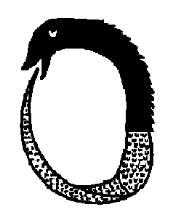The Cusa View "East is East, and West is West, and never the twain shall meet." Nicholas of Cusa (1401 – 1464) was very much engaged in how to reconcile and integrate opposites into a wholeness or unity. As a religious man he felt that in a world created by God, all things could be reconciled. An integration of elements is often not possible because unlike totality, wholeness is not all-inclusive. It may be that due to their nature some of the elements cannot be integrated, or there are parts of the elements that sobatage the process, or perhaps both. Quantum Polarity goes far to fulfill Nicholas' dream. It does this by applying polarity to itself to achieve a refinement of categories so that a clearer discernment becomes possible. This clarity informs us as to what can and what cannot be integrated. It mandates a process of refinement or purification of a number of the elements in preparation for the next step. Although integration is still elusive, it is no longer impossible. The Cusa View of Quantum Polarity is depicted by a diagram that contains the various elements of an expanded polarity and shows the connections between them. Although the diagram is fairly simple, putting it into practice, especially in a quantum reality, is not. It brings up the well-known difference between theory and practice where the theory might be perfectly known and understood, but applying it may require many attemps and much adjustment to the theory. But with practice what becomes possible is a two-step transformation resulting in wholeness. The first step involves the transformation of each element that offers resistance to integration. The Quantum Polarity diagram acts as a form or frame that when imposed on any situation reveals a hidden side of the elements. It informs where attention is needed and how to apply it. The addition of the presence of an element of wholeness adds to the clarity established by Quantum Polarity the ability to see the difficulty in a different light (i.e. from a higher or deeper level), normally resulting in a complete turn-around. When all the elements have been transformed to a disposition suitable for integration, the next step is the integration itself. Again it is essential for an element of wholeness to be present to make this possible. It acts as a catalyst to the process by evoking from the elements of the whole a sense of harmony and cooperation that has heretofore only been a faint hope or dream. But they are ready for it now and even though it may take some time, the elements will rearrange themselves in such a way that they slowly come together. They eventually come to a point where everything snaps together, unexpectedly and as if by magic, to form a whole. The two critical and essential components to this process are a knowledge of Quantum Polarity and the presence of an element of wholeness, which by definition has already gone through this process.
www.quantumpolarity.com August 6, 2011
|


